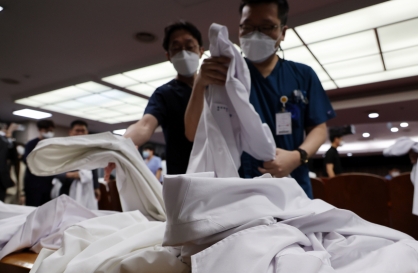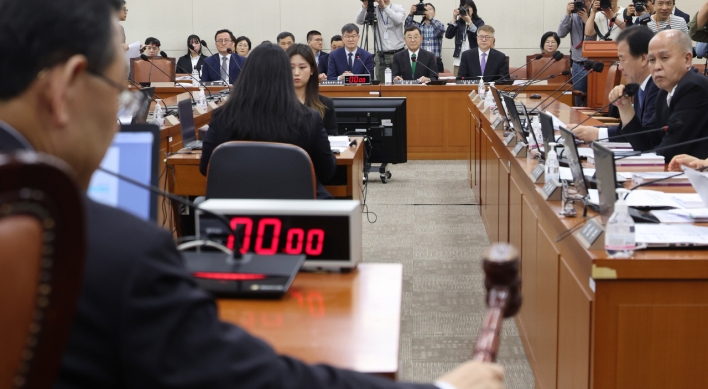The scourge of child labor has proven difficult to eradicate. The International Labor Organization estimates that 215 million children are still being exploited for work, much of it hazardous.
In recent years, the fair-trade movement has presented itself as an answer, offering, at a premium, goods and commodities certified to have been produced without exploitation. It is thus all the more appalling that a fair-trade program in Burkina Faso has been shown, in an investigation published in Bloomberg Markets Magazine, to have used child laborers to produce cotton that wound up in most of the cotton-underwear lines sold by Victoria’s Secret.
The scandal is a reminder that fair-trade stamps are only meaningful to the extent the unregulated organizations that grant them abide by their promise to enforce their own standards. The largest of these, Fairtrade International, which certified the Burkina Faso cotton, is investigating its mistake.
Yet Fairtrade should have been on the alert to begin with. Burkina Faso cotton is included in the U.S. Labor Department’s list of goods produced by children. And the abuses within Victoria’s Secret’s program were evidently not hard to uncover. Rampant use of children’s work was described in an unpublicized 2008 study of the cotton growers in the project. The survey was commissioned by Victoria’s Secret’s in-country partner. In recent weeks, Bloomberg reporter Cam Simpson discovered that little, if anything, had improved since then.
Victoria’s Secret has serious accounting to do, as well. In an initial response to Bloomberg, the retailer’s parent, Limited Brands Inc., said it took the allegations seriously and is investigating them. The company said it held its suppliers responsible for meeting its sourcing standards, which prohibit the use of child labor.
That won’t suffice.
Victoria’s Secret would be wise to draw inspiration from the example of Gap Inc., which was hit in 2007 by the disclosure that some of its clothes had been embroidered by child workers in India. Gap immediately stopped the items from being sold. It paid the children back wages, and guaranteed them support payments, education expenses and a job, once they were old enough.
An even better approach to abuses such as these is to prevent them. As the world’s biggest importer, the U.S. can significantly affect the use of underage workers overseas. The departments of State and Labor have initiatives to combat the practice globally, including programs that since 1995 have rescued or spared 1.4 million children from exploitative labor. Many effective nonprofit groups also are in the fight.
It’s impossible, however, for any government or organization to detect every case. The parties in the best position to know how products are produced are the importers. The issue, then, is how to motivate them to care.
On Dec. 7, U.S. Representative Christopher Smith introduced an amendment to a bill reauthorizing the Victims of Trafficking and Violence Protection Act, which encourages companies to each year voluntarily disclose publicly and report to the State Department measures they have taken to address forced labor in their supply chains. It would be a better idea if the reporting were mandatory for major importers, as it is in a California law enacted last year that puts the onus on companies to know who makes the goods from which they profit.
To provide real bite, Congress should amend the Tariff Act of 1930. The law forbids the importation of goods that are made using forced labor, unless U.S. consumer demand can’t be met by similar items produced at home. The loophole renders the ban almost useless, since courts have ruled that U.S. Customs cannot block any product unless the U.S. makes enough of it to meet 100 percent of domestic needs.
The exclusion was intended to allow the importation of goods such as rubber, tea and coffee, which at the time were often grown on forced-labor plantations. The 1930 provision is unsuited to a globalized 21st-century economy that gives importers a wide choice of suppliers. As the dominant force in this new era, the U.S. has an obligation to set the example.
(Bloomberg)
In recent years, the fair-trade movement has presented itself as an answer, offering, at a premium, goods and commodities certified to have been produced without exploitation. It is thus all the more appalling that a fair-trade program in Burkina Faso has been shown, in an investigation published in Bloomberg Markets Magazine, to have used child laborers to produce cotton that wound up in most of the cotton-underwear lines sold by Victoria’s Secret.
The scandal is a reminder that fair-trade stamps are only meaningful to the extent the unregulated organizations that grant them abide by their promise to enforce their own standards. The largest of these, Fairtrade International, which certified the Burkina Faso cotton, is investigating its mistake.
Yet Fairtrade should have been on the alert to begin with. Burkina Faso cotton is included in the U.S. Labor Department’s list of goods produced by children. And the abuses within Victoria’s Secret’s program were evidently not hard to uncover. Rampant use of children’s work was described in an unpublicized 2008 study of the cotton growers in the project. The survey was commissioned by Victoria’s Secret’s in-country partner. In recent weeks, Bloomberg reporter Cam Simpson discovered that little, if anything, had improved since then.
Victoria’s Secret has serious accounting to do, as well. In an initial response to Bloomberg, the retailer’s parent, Limited Brands Inc., said it took the allegations seriously and is investigating them. The company said it held its suppliers responsible for meeting its sourcing standards, which prohibit the use of child labor.
That won’t suffice.
Victoria’s Secret would be wise to draw inspiration from the example of Gap Inc., which was hit in 2007 by the disclosure that some of its clothes had been embroidered by child workers in India. Gap immediately stopped the items from being sold. It paid the children back wages, and guaranteed them support payments, education expenses and a job, once they were old enough.
An even better approach to abuses such as these is to prevent them. As the world’s biggest importer, the U.S. can significantly affect the use of underage workers overseas. The departments of State and Labor have initiatives to combat the practice globally, including programs that since 1995 have rescued or spared 1.4 million children from exploitative labor. Many effective nonprofit groups also are in the fight.
It’s impossible, however, for any government or organization to detect every case. The parties in the best position to know how products are produced are the importers. The issue, then, is how to motivate them to care.
On Dec. 7, U.S. Representative Christopher Smith introduced an amendment to a bill reauthorizing the Victims of Trafficking and Violence Protection Act, which encourages companies to each year voluntarily disclose publicly and report to the State Department measures they have taken to address forced labor in their supply chains. It would be a better idea if the reporting were mandatory for major importers, as it is in a California law enacted last year that puts the onus on companies to know who makes the goods from which they profit.
To provide real bite, Congress should amend the Tariff Act of 1930. The law forbids the importation of goods that are made using forced labor, unless U.S. consumer demand can’t be met by similar items produced at home. The loophole renders the ban almost useless, since courts have ruled that U.S. Customs cannot block any product unless the U.S. makes enough of it to meet 100 percent of domestic needs.
The exclusion was intended to allow the importation of goods such as rubber, tea and coffee, which at the time were often grown on forced-labor plantations. The 1930 provision is unsuited to a globalized 21st-century economy that gives importers a wide choice of suppliers. As the dominant force in this new era, the U.S. has an obligation to set the example.
(Bloomberg)






![[Grace Kao] Hybe vs. Ador: Inspiration, imitation and plagiarism](http://res.heraldm.com/phpwas/restmb_idxmake.php?idx=644&simg=/content/image/2024/04/28/20240428050220_0.jpg&u=)
![[Herald Interview] Mom’s Touch seeks to replicate success in Japan](http://res.heraldm.com/phpwas/restmb_idxmake.php?idx=644&simg=/content/image/2024/04/29/20240429050568_0.jpg&u=)


![[News Focus] Lee tells Yoon that he has governed without political dialogue](http://res.heraldm.com/phpwas/restmb_idxmake.php?idx=644&simg=/content/image/2024/04/29/20240429050696_0.jpg&u=20240429210658)








![[Today’s K-pop] Seventeen sets sales record with best-of album](http://res.heraldm.com/phpwas/restmb_idxmake.php?idx=642&simg=/content/image/2024/04/30/20240430050818_0.jpg&u=)